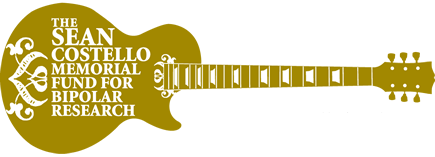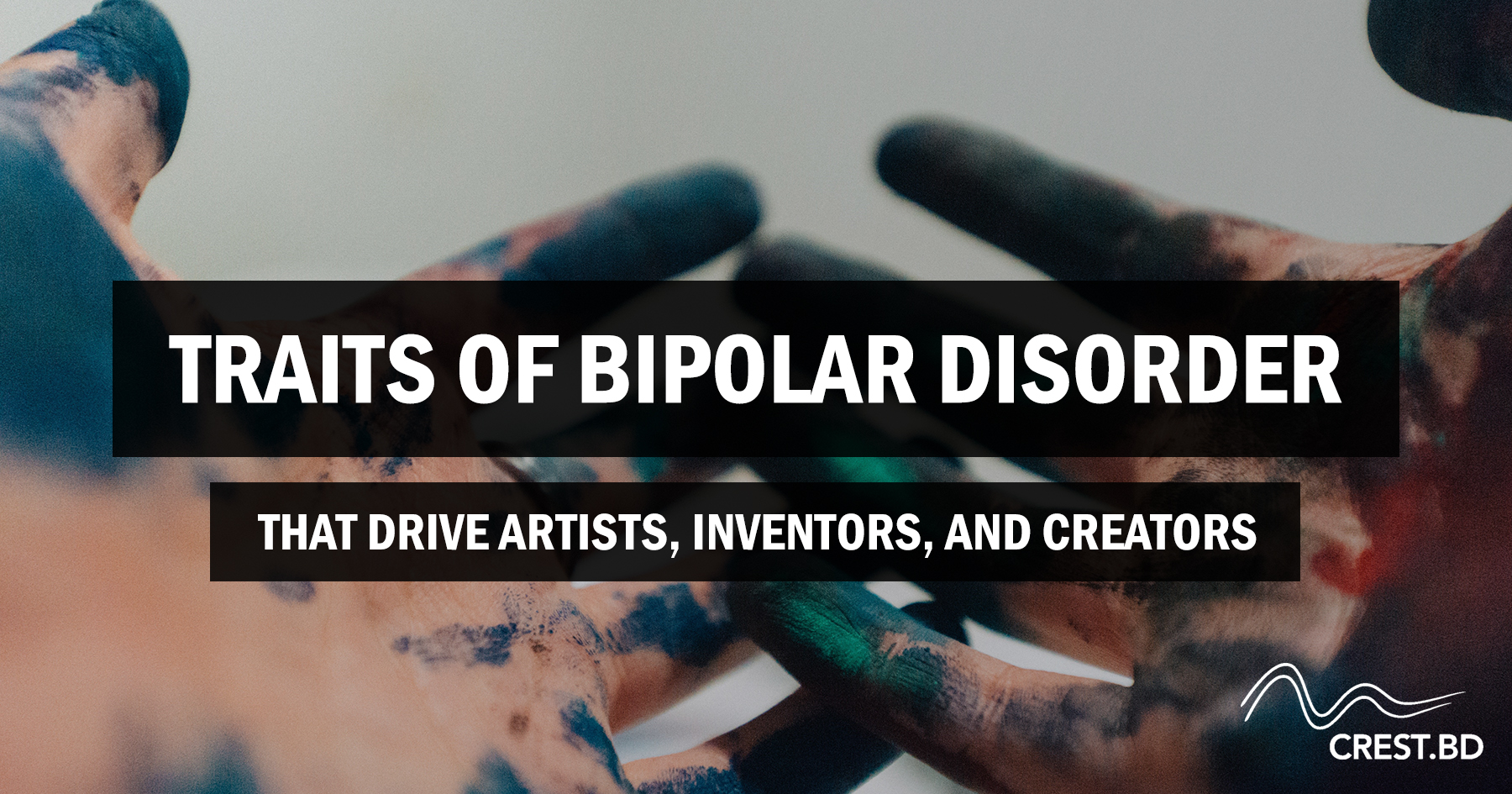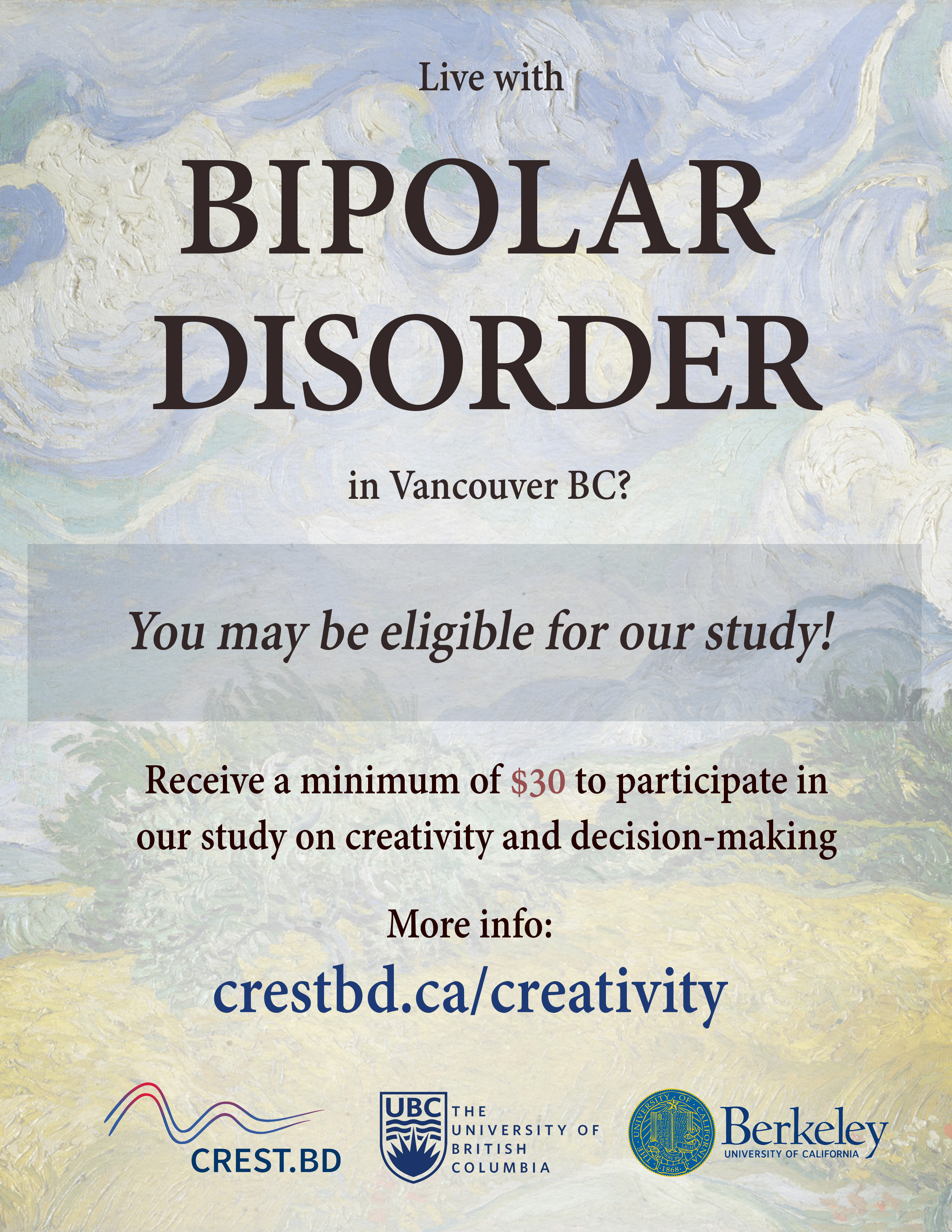CREST.BD is currently recruiting participants for a research study on creativity and bipolar disorder in the Vancouver and Berkeley areas.
Hemingway, Dickens, Rachmaninoff, Tchaikovsky, Gauguin, O’Keefe, and you – what is the shared thread that drives some of the most respected and renowned artists in their crafts? Biographical reports suggest these authors, musicians, and artists, among many other household names, may have lived with manic symptoms characteristic of Bipolar I and II (Jamison 1993). If it’s true these artists lived with symptoms of bipolar disorder (BD), is there a specific trait or traits that lead to this enhanced creativity, and if so, what are they? CREST.BD is currently recruiting creative individuals living with bipolar disorder to help answer this question by participating in a study funded by the Sean Costello Fund titled Do Ambitious and Exploratory Behaviors Drive Creativity in Bipolar Disorder? The Quest for a Mechanism.
The link between BD and creativity has been recognized for hundreds of years, with numerous recent studies and models seeking to explain the potential connection. In exploring the role of manic symptoms, such as those often noted in the biographical profiles of famous creators, several researchers have noted a U-shaped relationship between illness severity and creativity, where both those at-risk for BD and those who experienced milder forms of mania (e.g., hypomania) exhibit greater creativity than people without BD and those who experienced full-fledged manic episodes (Johnson et al. 2012). More generally, the findings of a large-scale study published in 2012 showed that individuals living with the condition were significantly more likely to report being engaged in a “creative profession,” operationally defined as a scientific or artistic occupation, than those without the condition or those living with other psychiatric conditions (Kyaga et al. 2012). This suggests that there may be a trait in BD specifically, rather than psychopathology in general, that fuels creative outputs and potential. But what specific mechanism or mechanisms play a critical role in driving this creative energy? CREST.BD is currently exploring an integrative model of these processes.
Named after American blues musician Sean Costello, the Sean Costello Research Fund is supporting CREST.BD to expand on past research focusing on the link between BD and creativity by investigating two specific traits: willingness to pursue effort in pursuit of reward, and a preference for exploratory vs. exploitative decision making when pursuing reward. It’s already known that, in addition to reporting high ambition, those living with BD tend to exert a greater amount of effort for a greater duration compared to control participants (Johnson et al. 2012), and are more willing to exert a greater amount effort to earn rewards (Peckham et al. 2016). Exploratory behaviour has also been found to be increased in those living with BD compared to those living without the condition, suggesting that this may be another important trait-like feature of the condition (Henry et al. 2010). If you’re a creative individual living with either Bipolar I or II in the Vancouver area, the Costello Project might be for you! Those interested in being a part of the Costello Project will be invited to take a 30-45 minute phone screening in which we’ll determine participation eligibility. If the study seems like a good fit, participants will be invited to come join us at the UBC Vancouver campus for a three-hour study involving a series of interviews and tasks, for which participants will be compensated $15/hr and up to $20 for task performance.
I joined the CREST.BD team in May of 2018 after participating in the Costello Project myself as a person living with bipolar II. As a UBC Psychology student and self-proclaimed “creative,” I was intrigued by the project on both a personal and academic level after seeing several eye-catching posters advertising the study around campus and reading more on the CREST.BD website, and promptly signed up to participate. The opportunity to both be a part of such vital research pursuing the betterment of treatments for individuals living with BD and to become immersed in the world of clinical research as an aspiring student researcher was an experience I am so glad I was able to take part in, even more so now as a CREST.BD team member! I have always been involved in and continuously exploring a variety of creative pursuits, ranging from working with my father in chemistry labs, to creating with my mother in art studios, to pursuing my own independent research projects as a psychology major while drafting poetry and lyric/music compositions as a creative writing minor. Creative pursuits are a fundamental part of my identity, and while balancing BD and its associated stigma in my day-to-day can be challenge, I wouldn’t trade my passion, drive, and originality for anything.
Sign up for CREST.BD’s Creativity and Bipolar Disorder study here: crestbd.ca/creativity
*Participation for this study is also available for those who are available to travel to a second research site at UC Berkeley – https://goo.gl/BnjpmD

The Sean Costello Memorial Fund for Bipolar Research
References
Henry, B. L., Minassian, A., Young, J. W., Paulus, M. P., Geyer, M. A., & Perry, W. (2010). Cross-species assessments of motor and exploratory behavior related to bipolar disorder. Neurosci Biobehav Rev, 34(8), 1296-1306.
Jamison, K. R. (1993). Touched with fire: Manic-depressive illness and the artistic temperament. New York: Simon and Schuster.
Johnson, S. L., Edge, M. D., Holmes, M. K., & Carver, C. S. (2012). The behavioral activation system and mania. Annu Rev Clin Psychol, 8, 243-267.
Kyaga, S., Landen, M., Boman, M., Hultman, C. M., Langstrom, N., & Lichtenstein, P. (2012). Mental illness, suicide and creativity: 40-year prospective total population study. J Psychiatr Res, 47(1), 83-90.
Peckham, A. D., & Johnson, S. L. (2016). Spontaneous Eye-Blink Rate as an Index of Reward Responsivity: Validation and Links to Bipolar Disorder. Clin Psychol Sci, 4(3), 451-463.
Ruiter, M. & Johnson, S. L. (2015). Mania risk and creativity: a multi-method study of the role of motivation. J Affect Disord, 170, 52-58.





Leave a Reply